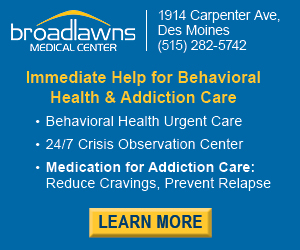Consider the downs of downsizing

.bodytext {float: left; } .floatimg-left-hort { float:left; margin-top:10px; margin-right: 10px; width:300px; clear:left;} .floatimg-left-caption-hort { float:left; margin-bottom:10px; width:300px; margin-right:10px; clear:left;} .floatimg-left-vert { float:left; margin-top:10px; margin-right:15px; width:200px;} .floatimg-left-caption-vert { float:left; margin-right:10px; margin-bottom:10px; font-size: 10px; width:200px;} .floatimg-right-hort { float:right; margin-top:10px; margin-left:10px; margin-bottom:10px; width: 300px;} .floatimg-right-caption-hort { float:left; margin-right:10px; margin-bottom:10px; width: 300px; font-size: 10px; } .floatimg-right-vert { float:right; margin-top:10px; margin-left:10px; margin-bottom:10px; width: 200px;} .floatimg-right-caption-vert { float:left; margin-right:10px; margin-bottom:10px; width: 200px; font-size: 10px; } .floatimgright-sidebar { float:right; margin-top:10px; margin-left:10px; margin-bottom:10px; width: 200px; border-top-style: double; border-top-color: black; border-bottom-style: double; border-bottom-color: black;} .floatimgright-sidebar p { line-height: 115%; text-indent: 10px; } .floatimgright-sidebar h4 { font-variant:small-caps; } .pullquote { float:right; margin-top:10px; margin-left:10px; margin-bottom:10px; width: 150px; background: url(http://www.dmbusinessdaily.com/DAILY/editorial/extras/closequote.gif) no-repeat bottom right !important ; line-height: 150%; font-size: 125%; border-top: 1px solid; border-bottom: 1px solid;} .floatvidleft { float:left; margin-bottom:10px; width:325px; margin-right:10px; clear:left;} .floatvidright { float:right; margin-bottom:10px; width:325px; margin-right:10px; clear:left;} Imagine a family: a father, a mother and four children. The family has been together for a long time, living in a nurturing and trusting environment. The parents take care of the children, who reciprocate by being good. Every morning the family sits down to breakfast together, a ritual that functions as a bonding experience. One morning, the children sense that something is wrong. The parents appear nervous, and after a painful silence, the mother speaks. “Father and I have reviewed the family budget,” she says, “and we just don’t have enough money to make ends meet. As much as we would like to, we just can’t afford to feed and clothe all four of you.” After another silence, she points a finger. “You two must go.”
“It’s nothing personal,” explains the father as he passes out a sheet of paper to each of the children. “As you can see by the numbers in front of you, it’s simply an economic decision – we really have no choice.” He continues, forcing a smile, “We have arranged for your aunt and uncle to help you get settled to aid in your transition.”
The next morning, the parents emphasize to the two remaining children that they should be grateful “because, after all, you’ve been allowed to remain in the family.” To show their gratitude, the remaining children will be expected to work harder on the family chores, because the workload remains the same even though there are two fewer people.
This metaphor comes from the book “Healing the Wounds: Overcoming the Trauma of Layoff and Revitalizing Downsized Organizations” by David Noer. I often use this story in leadership seminars to help people experience how it might feel to be downsized out of an organization or left as a survivor. This metaphor is relevant because companies continue to talk about organizations as communities where they take care of one another as family, and mission statements often emphasize that employees are their most important resource. Companies expect integrity, creativity, courage, teamwork and loyalty, but often these same characteristics are not returned.
Research indicates that the pace of downsizing continues to accelerate. Morgan Stanley estimates that about 80 percent of recent U.S. layoffs involved white-collar, well-educated employees. The logic that drives most downsizing is that there are only two ways to make money in business: Either you cut costs or you increase revenues. Predicting future costs is easier than predicting future revenues.
Those of us who believe people are assets to be developed also believe that the only long-term sustainable sources of competitive advantage are the people within the company. Technology, resources, systems and processes can be imitated, sometimes rather quickly. When people are engaged, involved and committed, they can be extremely creative when given the opportunity in finding ways to improve the situation. The way to solve problems that customers think are important is to value and protect your human capital.
Jann Freed holds the Mark and Kay De Cook Endowed Chair in Leadership and Character Development at Central College in Pella.







